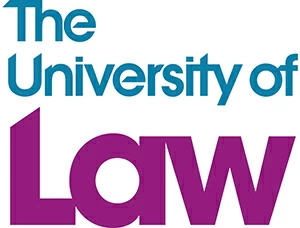
Sue the Seller? How to Handle Hidden Repairs after the Sale
January 17, 2020
Clear the Lobby: What laws are MPs voting on this week (w/c 20th January)?
January 19, 2020By Lucas Mill
It is rare to find an individual who has never worn a pair of trainers or an item of clothing branded with Adidas’s famous three stripes. The simple, three-lined logo is synonymous with the multinational sportswear brand. However, the recent judgement of the General Court in Case T-307/17 – Adidas v EUIPO – Shoe Branding Europe has proved that no matter the identifiability of a logo, it can still be subject to invalidity.
Recap
Back in 2013, Adidas AG filed an application to register an EU trademark with the European Union Intellectual Property Office (EUIPO) for clothing, footwear and headgear. The application describes the mark as ‘three parallel equidistant stripes of identical width, applied on the product in any direction’. With the registration finally complete in 2014 things took a turn for the worse when the Belgium footwear company Shoe Branding Europe BVBA applied for a declaration of invalidity of the mark.
Adidas’s initial application was held to be invalid by the Cancellation Division, on the ground that the mark at issue was devoid of any distinctive character, both inherent and acquired through use. Adidas, in its subsequent appeal, did not dispute the lack of inherent distinctiveness of the mark at issue, but they claimed that the mark had acquired distinctiveness through widespread use throughout the union.
In 2017, the Second Board of Appeal of EUIPO dismissed the appeal, noting:
- That the mark at issue has been validly registered as a figurative mark,
- It confirmed the Cancellation Division’s assessment that the mark was inherently devoid of distinctive character, and finally,
- The Board of Appeal examined the evidence adduced by Adidas and found that they had failed to establish that the mark had acquired distinctive character through use throughout the European Union.
Case Analysis
On May 18, 2018, Adidas lodged an application with the General Court against the decision of the Board of Appeal. In support of its action, Adidas contended that:
- The Board of Appeal wrongly dismissed numerous items of evidence on the ground that the evidence related to signs other than the mark at issue and,
- The Board of Appeal made an error of assessment in holding that it was not established that the mark at point had acquired distinctive character following the use, which has been made of it within the European Union.
In its judgement this summer, the General Court dismissed both pleas, upheld the nullity decision and dismissed Adidas’s action against the EUIPO decision.
The Court could not be convinced of its distinctiveness. This was based on three considerations:
- Where a trademark is extremely simple, even a slight difference could lead to a significant alteration to the characteristics of the mark as it had been registered;
- The use of the mark at issue in the form where the color scheme is reversed necessarily alters the distinctive character of that mark;
- The use of sloping stripes altered the distinctive character of that mark.
Adidas had submitted an ‘enormous amount’ of evidence to defend their trademark, amassing over 12,000 pages. However, the Court found that much of the evidence submitted could not be taken into account when assessing whether the mark had acquired distinctive character, as the trademark shown in the evidence was too different from the registered mark. Different colours and orientations of the three-striped logo were not relevant to support the one in question. Furthermore, there was no clear indication of how much each instance of the trademark shown had been used, thus deeming the evidence insubstantial.
Takeaways
First, the scope of figurative marks cannot typically be assumed to extend to variations that result from the same basic idea. It is essential to keep trademark registrations of figurative marks in line with the actual use.
Secondly, the decision of the court reaffirms the high standards set by the EUIPO for the proof of use of an EU trademark, be it proof of genuine use to fulfill the use requirement, be it evidence provided to demonstrate acquired distinctiveness.
Thirdly, this judgement shows how important it is to compile comprehensive documents at regular intervals. A compilation of evidence should take into account that:
- The time of use;
- The financial turnover in question;
- The specific goods or services the use of which should be shown;
- The particular trademark in question (not just the company or a specific line of products) must all be evident from the documentation.
This case proves that no matter how large or established a company may be, the trademarking process is complex and easily liable to invalidity. Simplicity can often prove to be the most complicated of routes.





